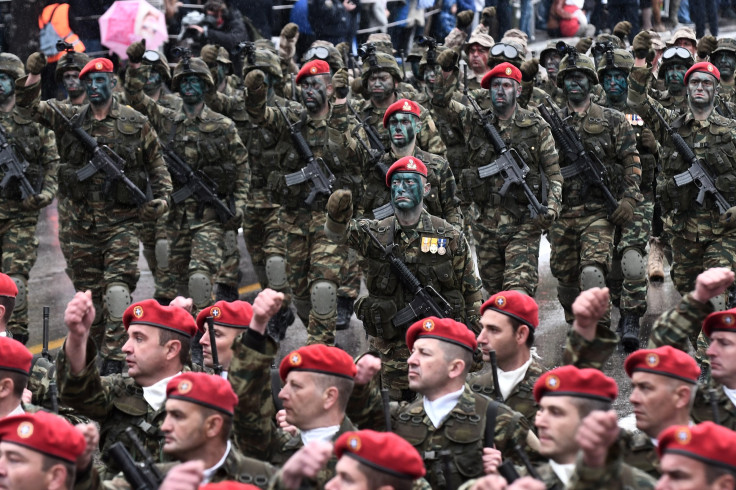Human Violence, Bloodlust Not Diminished By Modern Civilization, Anthropologists Say

Even as figures like Gandhi, Martin Luther King Jr., and Nelson Mandela have left their mark on history as champions of nonviolence in the face oppression, but does that mean human inclination toward violence has reduced since our evolution into Homo sapiens? A recent anthropology paper contests the view that people living in modern nation-states are less violent than their hunter-gatherer predecessors.
“Annual War Deaths in Small-Scale versus State Societies Scale with Population Size Rather than Violence” appeared online earlier in October in the journal Current Anthropology, and it contends that human bloodlust remains unabated, modern civilization notwithstanding. It also adds that as a percentage of the human population, the likelihood of individuals to survive a large-scale outbreak of violence is now greater than it used to be.
For the study, Dean Falk from Florida State University (FSU) and Charles Hildebolt from the Washington University Medical School in St. Louis — authors of the paper — looked at population sizes and deaths from intergroup conflicts among a variety of groups. They analyzed these data from 11 chimpanzee communities, 24 human nonstates (a term for groups like tribes and clans that operate mostly outside a state), 19 countries that fought in the World War I and 22 that fought in World War II. The chimpanzees were included in the study because they attack and kill individuals in other groups.

Compared to chimpanzees, humans were found to be a lot more violent, suggesting the development by our species of more severe forms of waging war. While chimpanzees, for example, still rely on rudimentary tools and physical strength, humans have moved from stone axes to fighter planes and guided missiles.
This could also explain why within different human societies, war deaths were found to increase in sync with increasing population sizes. This was true for both the small-scale nonstate populations, as well as modern state societies.
However, a difference shows itself between modern societies and relatively older ones when looking at the number of victims of violence as a proportion of the overall population. Even as the number of soldiers or combatants who die in the war in modern societies has gone over time, it has fallen as a percentage of the total population.
“Rather than being more violent, people who live in small-scale societies are more vulnerable to a significant portion of their community being killed in warfare than those living in states because, as the old saying goes, ‘there is safety in numbers.’ We recognize, of course, that people living in all types of societies have the potential not only for violence — but also for peace,” Falk said in a statement Wednesday on the FSU website.
The decline in the number of violent deaths as a percentage of overall population, as the population increased, was observed even in chimpanzees.
“However, the absolute number of mean annual war deaths increases exponentially (superlinearly) and nearly identically with population sizes across human groups but not chimpanzees. These findings suggest that people evolved to be more violent than chimpanzees and that humans from nonstates are neither more nor less violent than those from states,” researchers conclude in the paper.
© Copyright IBTimes 2025. All rights reserved.





















